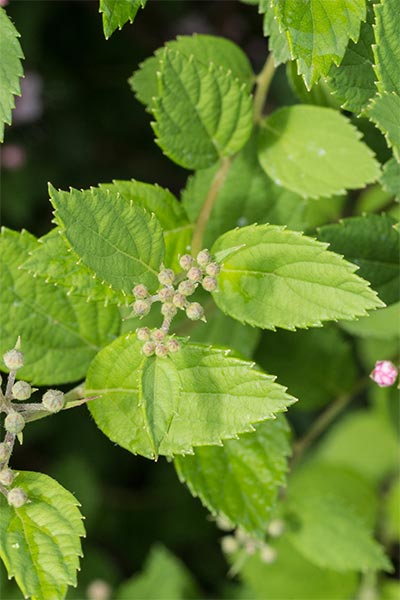Japanese Spirea
- Scientific Name: Spirea japonica
- Garden: Beneficial Insects and Compost Garden, Rain Garden
- Plant Type: Shrub
- Evergreen/Deciduous: Deciduous
- Sun/Shade Exposure: Full Sun to Part Shade
- Moisture Requirements: Wet
Plant Information
Culture: Easily grown in average, medium to wet, well-drained, acidic soils in full sun to part shade. Needs consistent moisture. Soils should not be allowed to dry out. Remove suckers promptly to prevent plants from spreading to form thickets. Noteworthy Characteristics Spiraea douglasii, commonly called western spirea, steeple bush or hardhack, is a deciduous, clump-forming shrub that will spread by suckers to form colonies over time. It typically grows 4-6’ tall. It is native from Alaska to northern California and Montana where it is often found growing in moist soils of marshes, swamps, bogs, damp meadows and along streams. Oval green leaves (to 4” long) are felty white-tomentose beneath. Terminal clusters (to 8” long) of rose-pink flowers appear in summer. Flowers turn brown as they fade. Problems No serious insect or disease problems. Susceptible to fireblight, leaf spot, powdery mildew and die back. Potential insect pests include aphids and scale.
Data Source
https://www.missouribotanicalgarden.orgPlant Photos







